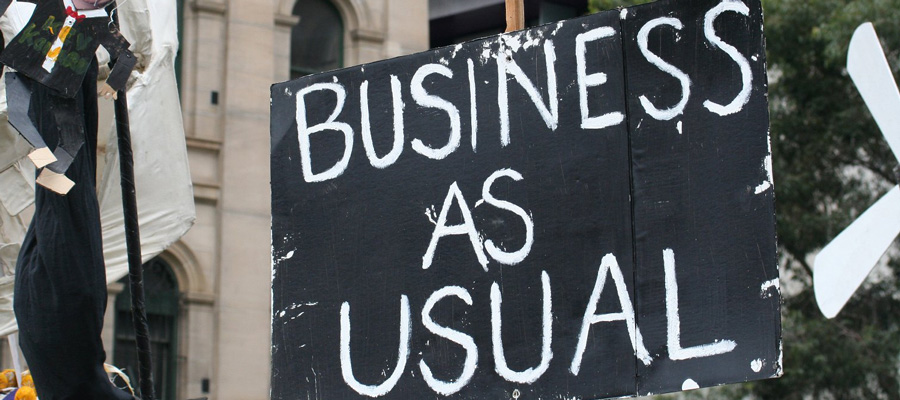The problem with BC’s “clean growth” climate rhetoric

The BC government recently released three “intentions papers” on climate policy—transportation, buildings and industry—all wrapped in the term “clean growth.” In fact, the term “clean” appears more than 70 times in just the introduction to the exercise, Towards a Clean Growth Future in BC.
Clean growth is not a commonly used term, nor is it something used by economists or other academics, so it’s worth asking why climate policy in BC is suddenly being framed this way. This post reviews the history of the term and offers a critique.
Usage began in the March 2016 Vancouver Declaration on Clean Growth and Climate Change, the communique of a post-Paris First Ministers’ meeting, which established a work plan for what became the federal-provincial Pan-Canadian Framework on Clean Growth and Climate Change, released by First Ministers in November 2016. The preamble to the Vancouver Declaration summarizes:
Canada stands at the threshold of building our clean growth economy. This transition will create a strong and diverse economy, create new jobs and improve our quality of life, as innovations in steam power, electricity and computing have done before. We will grow our economy while reducing emissions. We will capitalize on the opportunity of a low-carbon and climate-resilient economy to create good-paying and long-term jobs.
At best, clean growth is a business-friendly “motherhood” term that is hard to disagree with. More insidiously, it provides green cover for business-as-usual expansion of fossil fuel production and exports. This is clearly the case for the federal government, which argues that new bitumen pipelines are needed to go along with the modest climate policies that themselves are insufficient relative to our Paris commitments.
For BC, clean growth almost certainly includes the development of an LNG export industry. I have made the case elsewhere that a new LNG export industry could blow BC’s greenhouse gas reduction targets. Yet mention of LNG is entirely absent from the intentions papers, a glaring omission if there ever was one, especially since the government’s new climate plan will be announced right around the same time as we anticipate a final investment decision from the LNG Canada consortium (led by Shell in partnership with several Asian importers).
Clean growth joins the rhetorical pantheon of “climate action,” which came to prominence in BC in 2007/08, and the more self-congratulatory “climate leadership,” which surfaced in 2015 during the lead-up to the Paris climate conference.
In the face of climate policy that is full of jargon—from the underlying climate science to technical issues of regulation and carbon pricing—it is too easy for governments to pat themselves on the back for setting targets and taking small steps. Meanwhile, the status quo of growing fossil fuel production and exports remains unchallenged, with the result that far-off emission reduction targets are never met.
‘Clean growth’ provides green cover for business-as-usual expansion of fossil fuel production and exports.
The term “clean” has already been used to sanitize the world’s dirtiest fossil fuel as “clean coal.” Clean LNG is another term to greenwash a fundamentally carbon-intensive activity. For example, the proposed Woodfibre LNG plant near Squamish, BC would, instead of using gas, use grid electricity from BC Hydro to power the energy-intensive liquefaction process. In this case, “clean” does not apply to the extraction and processing of gas, nor does it apply to the downstream emissions when that gas is combusted. Instead it narrowly refers to electrification at just one stage of the supply chain, where gas is chilled to liquid form. This is an extremely energy-intensive process, even if powered by renewables.
Even the term “clean energy” is fraught. While a casual observer might assume clean energy means renewable technologies like wind and solar power, the term often includes the fossil fuel natural gas (methane). While gas is a cleaner-burning fossil fuel than coal in terms of GHG emissions at the point of combustion, the process of fracking for gas has huge environmental implications for water supplies, and also leakages of methane, which is itself a much more heat-trapping gas than carbon dioxide. The result? “Clean” natural gas is on par with coal.
And why such prominence for growth per se? Since at least the middle of the 20th century governments have been obsessed with growth as their top policy priority, and growth is viewed synonymously with progress and prosperity. Yet there are many long-standing critiques of growth based on ecological limits, how growth is distributed, and what is and is not included in the tally.
First, through both increased population and increased consumption per capita, economic growth has been directly correlated with the use of fossil fuel energy and thus growing carbon emissions. But even if we could just drop carbon emissions to zero, this narrow version of clean ignores other equally serious ecological challenges of growth, like plastic waste, environmental degradation, loss of biodiversity and habitat for other creatures.
Beyond the vagaries of growth, it is Gross Domestic Product (GDP) that must be grown. York University economist Peter Victor summarizes the critique in his classic book, Managing without Growth:
If we understand progress to mean an improvement in well being, then GDP is a poor measure. It includes many items that grow when things are or might be getting worse: for example, household expenditures on health care, repairs, commuting, pollution control devices, home security measures, and government expenditures on police and defence. Equally problematic as a measure of progress is what is left out of GDP: voluntary work, unpaid housework, leisure time, illegal trades, capital depreciation, and damage to the environment and the depletion of natural resources. Obviously GDP is not a reliable indicator of progress.
The focus on growth also glosses over extreme and growing inequality—the other “inconvenient truth.” For example, the carbon footprint of the richest 20% of British Columbians is almost double that of the poorest 20%, due to bigger houses, more cars, travel, and general consumption. Moreover, as we have seen in recent years, a large portion of growth (that is, new incremental income or GDP) has been captured by the top 10% of the population, and an alarming share just to the top 1%. As a society we are producing enough to eliminate poverty—we just choose not to do so—while allowing a handful to accumulate vast riches that would be the envy of kings and queens in the middle ages.
Governments have been obsessed with growth, viewed synonymously with progress and prosperity. Yet there are many critiques of growth based on ecological limits, how growth is distributed, and what is and is not included.
Clean growth thus promises change without fundamentally disrupting the existing economic and social order. A purely political term, clean growth frames mitigation policy in terms of opportunities for business and away from the need for individual and collective sacrifice to avert future horrors (that is, the harsh reality painted by climate science).
The rhetoric of clean growth evokes de-carbonization, the replacement of fossil fuel energy with renewables. The practice of clean growth, however, includes paradoxical claims that also accommodate expansion of Alberta’s oil sands and BC’s fracked gas production, accompanied by new bitumen pipelines and LNG terminals.
In light of these factors it is not at all obvious why growth has to be central to the current exercise of enacting more stringent climate policies while boosting employment. A growth fetish will not only fail to solve these problems, it will make them worse.


